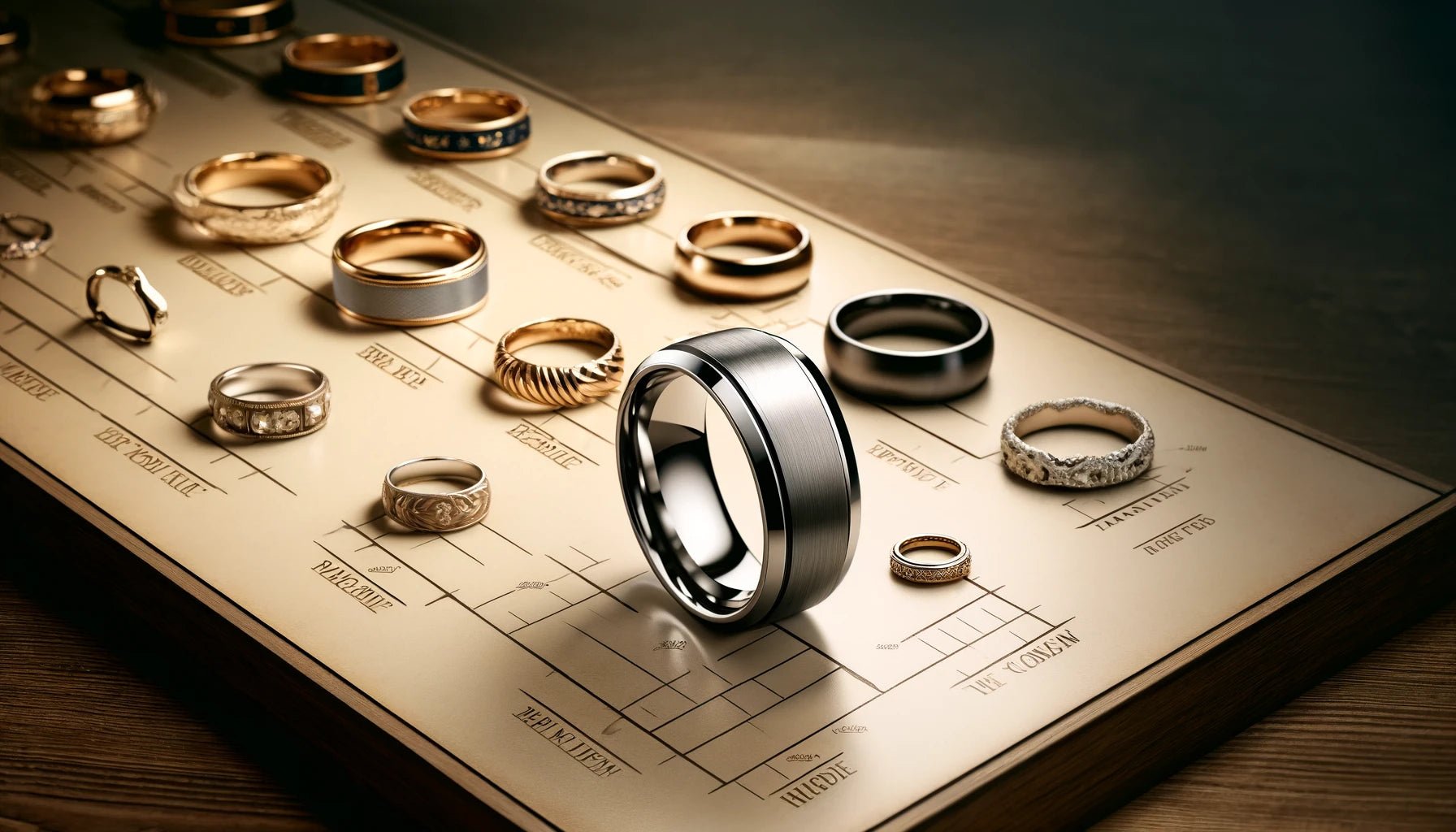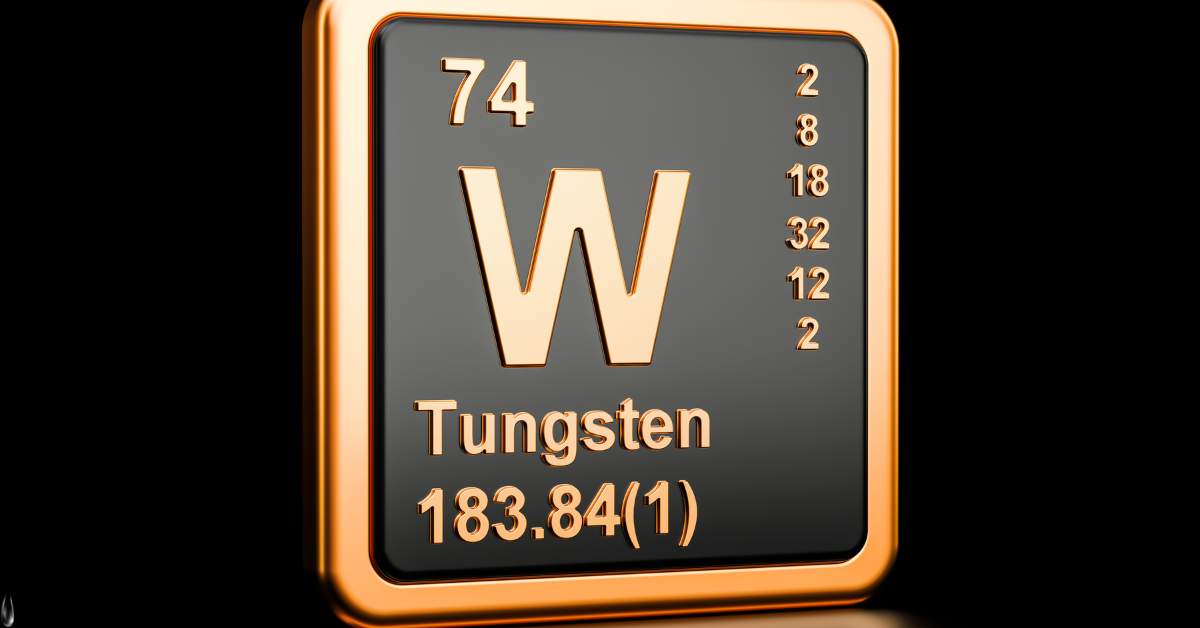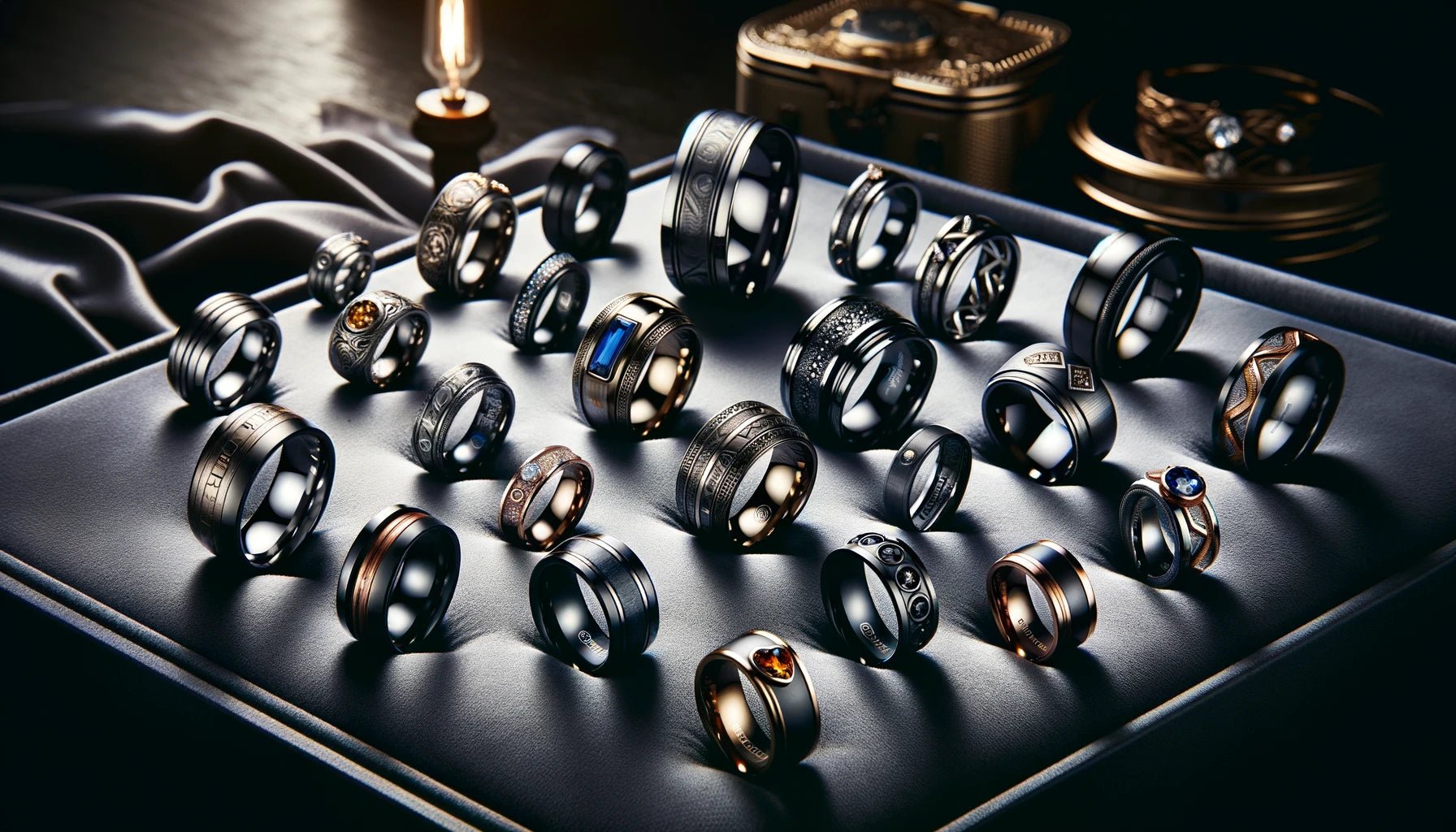
The Evolution of Men's Wedding Bands: The Rise of Tungsten in the Market
Introduction
Wedding bands symbolise the lifelong commitment and unity between partners, and over the centuries, these rings have evolved not only in design but also in the materials used to craft them. Traditionally, gold and silver have dominated the choices for these symbolic ornaments, but in recent times, a new contender has emerged in the market—tungsten. This introduction will delve into how tungsten has risen to prominence, offering a modern twist to an ancient tradition.
The Historical Significance of Wedding Bands
Wedding bands have been a marital symbol for millennia, tracing back to ancient Egypt where rings were exchanged as tokens of eternity due to their perfect circle representing everlasting love. Over time, these bands have traversed cultures and societies, evolving in style and substance. Traditionally, materials like gold, silver, and platinum have been preferred for their beauty and malleability. However, each era brings new trends and preferences that shape the choice of wedding bands, reflecting broader societal changes and technological advancements.
In the 20th century, the use of various metals began to reflect not only a commitment to marriage but also personal style and economic status. As we moved into the 21st century, there has been a noticeable shift towards more diverse and durable materials, setting the stage for materials like tungsten to enter the mainstream of jewellery fashion. This shift is not merely about fashion but also functionality, as modern lifestyles demand more from the everyday items we use and wear.
What is Tungsten?
Tungsten, also known by its chemical symbol W (Wolfram), is a rare metal known for its robustness and high melting point, qualities that make it an excellent choice for jewellery that needs to withstand the rigours of daily wear. Unlike traditional metals used in wedding bands, tungsten offers exceptional resistance to scratching and tarnishing, which appeals to those looking for longevity in their marriage symbols.
The process of converting raw tungsten into a gleaming ring suitable for wedding purposes involves combining tungsten with a carbon alloy, creating tungsten carbide. This material is second only to diamonds in terms of hardness, and its polished sheen can rival that of precious metals. Understanding these properties helps to appreciate why tungsten is not just an alternative, but often a preference for modern wedding bands.
Why Tungsten is Gaining Popularity
The growing popularity of tungsten can be attributed to several factors, primarily its durability and unique aesthetic appeal. In an era where longevity and value for money are paramount, tungsten's ability to resist wear and tear makes it an attractive option for couples looking to make a lifelong investment in their wedding bands. Its hefty feel and masculine look also appeal to men who might find traditional gold bands too delicate or not reflective of their personal style.
Moreover, tungsten's affordability compared to gold or platinum allows couples on a budget to still enjoy the look and feel of a premium-quality ring. This economic advantage is significant in today's market where many are looking to optimise their wedding budgets without compromising on quality or style. Thus, tungsten not only meets the demand for durability and beauty but does so in a way that is accessible to a broader audience.
Tungsten’s Unique Benefits
One of the most compelling advantages of tungsten is its remarkable durability. Tungsten carbide's resistance to scratching is a major selling point, especially for those whose professions or hobbies might expose their rings to rough conditions. This makes tungsten an ideal choice for individuals in trades or active lifestyles, where less hardy materials might suffer damage.
Additionally, tungsten does not bend out of shape due to its hardness. This property ensures that the wedding band remains as perfect as the day it was worn, without the need for frequent resizing or reshaping that is common with softer metals. Such permanence not only symbolises the steadfast nature of marital commitment but also translates into lower maintenance and repair costs over the lifetime of the ring.
Design Innovations in Tungsten Wedding Bands
The adaptability of tungsten to various designs has made it a favourite among jewellers who wish to offer a range of styles. From classic, simple bands to more elaborate designs featuring inlays of precious metals or gemstones, tungsten is versatile enough to cater to a broad spectrum of tastes. The natural grey hue of tungsten can also be altered through various finishes, providing options for those who prefer a darker or lighter appearance.
Customisation options in tungsten bands have expanded with technological advancements in jewellery making. Laser engraving, for example, allows couples to personalise their bands with dates, messages, or patterns that have personal significance, enhancing the emotional value of the rings. These innovations in design and customisation reflect how tungsten is not only keeping up with trends in wedding jewellery but often leading the way.
Tungsten vs Traditional Metals
When comparing tungsten to traditional metals like gold, silver, and platinum, several factors come into play, notably cost, durability, and aesthetic. While gold and platinum offer prestige and traditional appeal, their softer nature makes them prone to scratches and deformation. Silver, while more affordable, tarnishes over time and requires regular polishing to maintain its lustre.
Tungsten, on the other hand, offers a perfect balance between affordability and resilience. Its maintenance-free shine and resistance to physical changes make it a practical choice for everyday wear. These factors make tungsten not just an alternative, but often a preferable choice for modern couples looking for a blend of practicality and sophistication in their wedding bands.
Ethical and Sustainable Aspects of Tungsten
The sourcing and production of tungsten are also significant when considering its rise in popularity. Tungsten mining, primarily in China and Russia, is subject to increasing scrutiny regarding environmental and ethical practices. Unlike gold mining, which often involves significant environmental disruption, tungsten's impact is somewhat lesser, but still notable.
Consumers today are more conscious of the origins of the products they purchase, seeking assurances that their choices are not contributing negatively to the planet. Thus, jewellers and manufacturers are increasingly pushed to provide transparency about where and how their tungsten is sourced. This movement towards ethical consumerism is influencing decisions in the jewellery market, as buyers align their purchasing habits with their values.
Care and Maintenance of Tungsten Bands
Despite its toughness, taking care of tungsten jewellery is straightforward. Tungsten carbide's polish does not fade or tarnish over time, which means there is no need for regular polishing as with other jewellery metals. To clean a tungsten band, simply washing it with soap and water and drying it with a soft cloth is sufficient.
However, it's important to note that tungsten, while highly resistant to scratching, can crack under extreme pressure because of its hardness. Avoiding activities that could expose the ring to hard impacts will ensure its longevity. This ease of care, combined with the durable nature of the material, makes tungsten an appealing option for those who prefer low-maintenance accessories.
The Future of Tungsten in the Jewellery Market
The future looks bright for tungsten in the jewellery industry. As more couples seek out alternatives to traditional precious metals, the appeal of tungsten's unique properties is likely to grow. Innovations in jewellery technology and design are poised to further enhance the appeal of tungsten wedding bands, making them even more attractive to a broader audience.
Additionally, as the focus on sustainable and ethical production increases, the demand for materials that can be sourced and processed responsibly will rise. Tungsten, with its combination of durability, affordability, and potential for ethical sourcing, stands well-positioned to meet these future demands, potentially changing the landscape of the wedding band market permanently.
Tungsten in the Broader Context of Men's Fashion
The incorporation of tungsten into men's fashion goes beyond just wedding bands. Its characteristics make it suitable for other types of jewellery and accessories, signalling a shift in men's fashion towards more versatile and functional materials. As men become more invested in their personal style, the demand for accessories that are both stylish and practical is increasing. Tungsten's ability to meet these demands—combining resilience with a sleek, modern aesthetic—makes it a standout choice in the evolving world of men's fashion.
This trend reflects a broader shift in how men engage with fashion and accessories, breaking away from traditional choices and exploring new materials that reflect their individual lifestyles and values. Tungsten's rise in the market is as much about the changing ideals of durability and style as it is about the material itself.
Conclusion
The rise of tungsten in the wedding band market is a testament to the changing preferences and priorities of modern consumers. Its durability, affordability, and stylish versatility make it an increasingly popular choice among couples seeking practicality without sacrificing elegance. As we look towards the future, the role of tungsten in the jewellery industry is set to expand, reflecting broader shifts in consumer behaviour and the evolving narrative of marriage and commitment. Tungsten's journey from a mere alternative to a preferred choice encapsulates a broader trend towards innovative and sustainable choices in our everyday lives.



